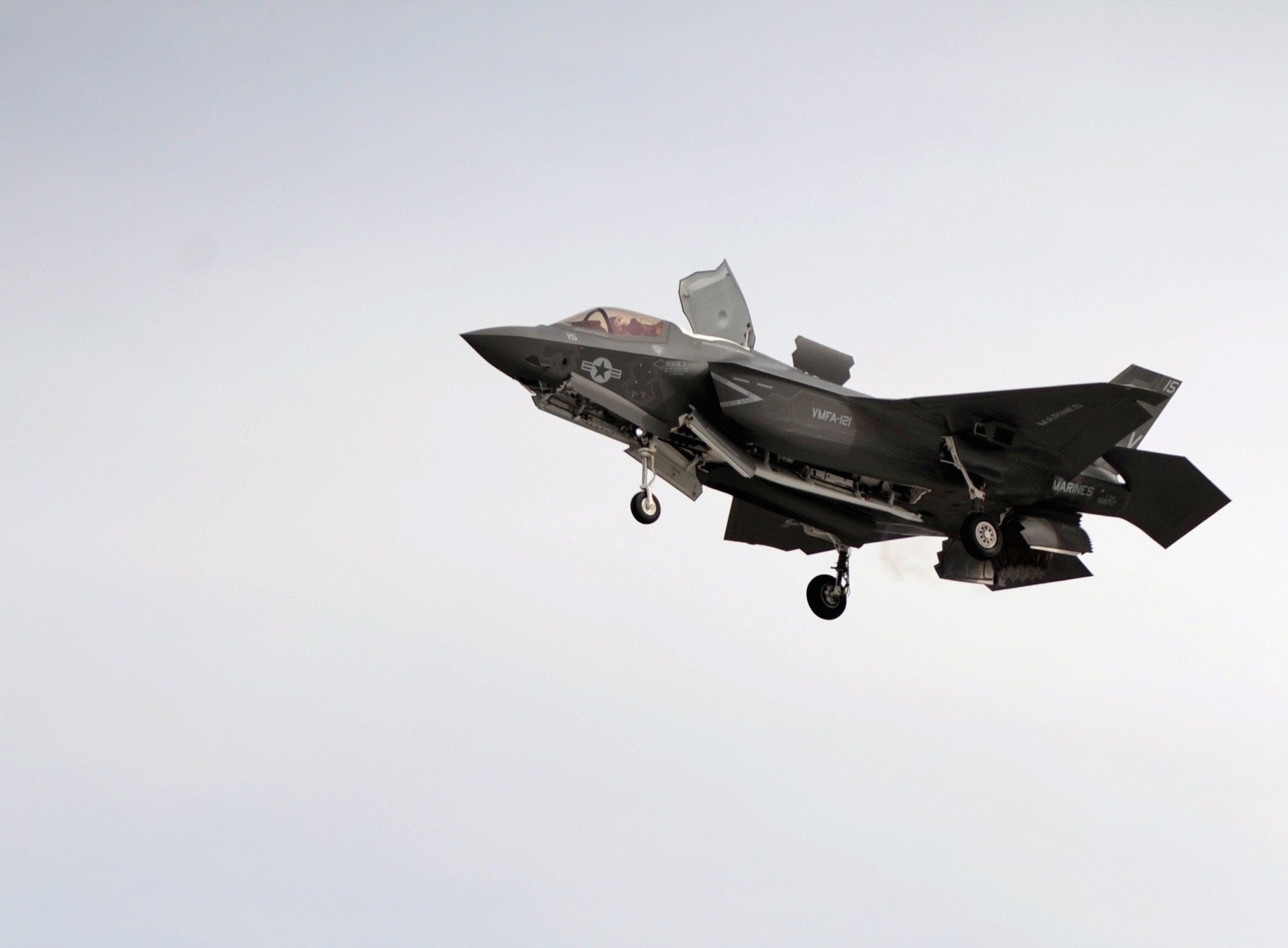
Delays in software developing and testing could limit the capabilities of the U.S. Marine Corps variants of the Lockheed Martin F-35 Lightning II Joint Strike Fighter when the plane becomes operational in 2015, according to a report released today from the Government Accountability Office (GAO).
“The Director of Operational Test and Evaluation (DOT&E) predicts delivery of warfighting capabilities could be delayed by as much as 13 months,” read the report.
It’s not clear what specific F-35 capabilities will be impacted by the delay. What is clear is that as of January 2014, the JSF program was expected to have verified 27 percent of the Block 2B software’s capability on-board the F-35, but had only managed to clear 13 percent of the total.
Block 2B is the configuration the U.S. Marine Corps hopes to declare the short takeoff vertical landing (STOVL) F-35B variant operational by July 2015.
According to the report, slow progress on verifying Block 2B capabilities mean that the JSF program will not likely meet the Oct. 2014 deadline to complete development of that software block.
“Delays of this magnitude would mean that the Marine Corps will not likely have all of the capabilities it expects in July 2015,” the report states. “The effects of these delays compound as they also put the timely delivery of Air Force and Navy initial operational capabilities at risk.”
Further delays could increase the level of concurrency between aircraft production and testing, which could result in further cost increases, read the report.
“Without a clear understanding of the specific capabilities that will initially be delivered, Congress and the military services may not be able to make fully informed resource allocation decisions,” the report said.
Nonetheless, the GAO notes that there have been improvements in flight sciences testing and that operational testing is slated to start in 2015.
“The program has continued to make progress in addressing some key technical risks,” the GAO said.
However, if the JSF program is to remain on track, the Defense Department will have to ramp-up funding for the program over the next several years.
“The Department of Defense (DOD) will have to increase funds steeply over the next 5 years and sustain an average of $12.6 billion per year through 2037; for several years, funding requirements will peak at around $15 billion,” the report states.
“Annual funding of this magnitude clearly poses long-term affordability risks given the current fiscal environment.”
JSF program executive officer Lt. Gen. Chris Bogdan told USNI News in a written statement that the program office values the GAO’s analysis and provided the government watchdog agency with unfettered access.
“We agree with the GAO’s recommendation to assess the specific capabilities the F-35 will have for the military services’ initial operating capability,” he said.
Bogdan said that there were no surprises in the GAO report, and while he agrees that software is the F-35 program’s “number one technical risk”, the program is confident it will deliver the required warfighting capability to the Marine Corps and U.S. Air Force on time.
“We are confident about delivering the F-35’s initial warfighting capability to the U.S. Marine Corps in 2015 and to the U.S. Air Force in 2016. The aircraft’s full warfighting capability is scheduled to be delivered to the U.S. Navy in 2018.” Bogdan said.
“There is more risk to that delivery schedule because it is naturally dependent upon the successful delivery of the previous software releases. We are working relentlessly to reduce this risk by tracking software development daily and fixing issues as we find them.”
One U.S. Air Force official familiar with the F-35, who had predicted the potential delay months ago, said that eventually the JSF program would deliver a useable aircraft but that there is a long way to go.
“We’ll get something usable. But it will take a while to get it done, and the final jet configuration will look a lot like Block 2B,” the official said.





